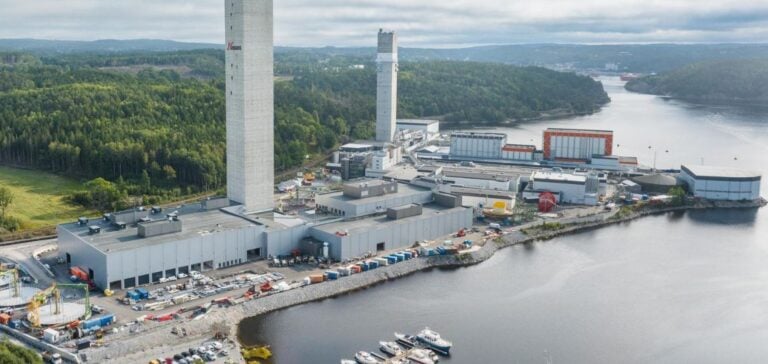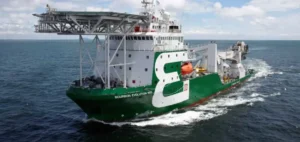Nexans has officially inaugurated the extension to its high-voltage submarine cable plant in Halden, Norway. This expansion is designed to meet the growing global demand for electrification and energy transition. Norway has also been investing in the energy transition for several years.
The plant extension, due to start up in November 2021, will incorporate some of the most advanced cable production technologies. It can produce submarine cables up to 525kV for high-voltage direct current (HVDC) and 420kV for high-voltage alternating current (HVAC). The 34,000 square meter expansion doubles the plant’s capacity for extruded HVDC cables.
State-of-the-art technology and increased capacity
One of the main features of this extension is the second extrusion tower, 152.89 metres high and the tallest in Norway. This tower can simultaneously insulate four cables, in addition to the two existing lines. Production will focus primarily on HVDC cables for offshore wind farms, but will also serve HVDC and HVAC applications.
This expansion has created over 100 jobs, bringing the total number of employees at the site to around 1,000. In addition, indirect jobs will be created to support the supply chain in Europe and internationally.
A historic milestone for the Halden plant
The Halden plant also celebrates its 50th anniversary. Initially built in 1974 to support the Skagerrak 1 and 2 interconnection projects in cooperation with Statnett, the facility has participated in projects worldwide. The first extrusion tower was erected in 1992, introducing the first high-voltage XLPE insulated cables to the Nexans portfolio.
The site also includes a test facility for high-voltage components and a quay for loading cables directly onto cable-laying vessels such as Nexans’ CLV Aurora, the C/S Skagerrak and the latest vessel under construction, the CLV Electra.
Impact on the energy market
Expanding submarine cable production capacity is essential to meet the growing demand for energy infrastructure. HVDC and HVAC cables are crucial for offshore wind farms and electrical interconnections, linking renewable energy production areas to centers of consumption.
This extension strengthens Nexans’ position in the global high-voltage cable market, supporting major energy projects in Europe and beyond. Increased production of HVDC and HVAC cables is a key element in achieving energy transition and carbon emission reduction targets.
The extension of the Halden plant represents a significant step forward for Nexans, increasing production capacity and improving operational efficiency. It also enables the company to respond more quickly and efficiently to the needs of its customers in the energy sector.






















